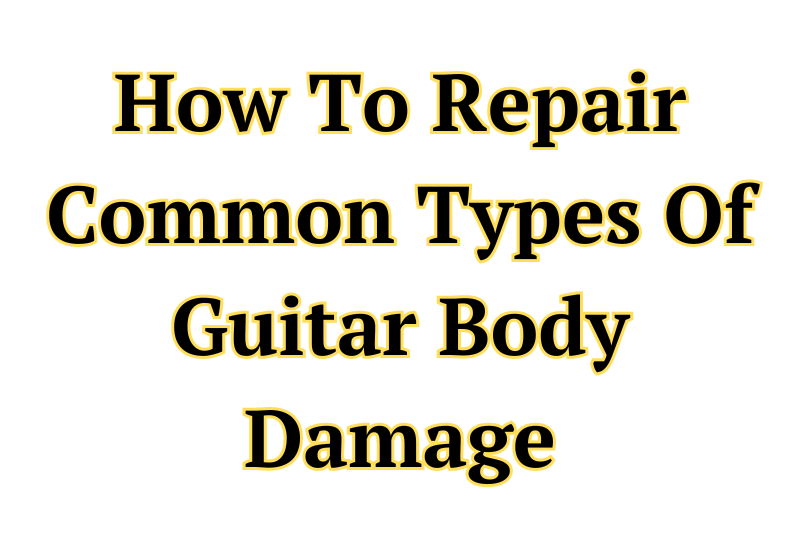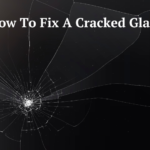The Best Fluffy Pancakes recipe you will fall in love with. Full of tips and tricks to help you make the best pancakes.

How To Repair Common Types Of Guitar Body Damage

Damage to the guitar body can be caused by a variety of factors, ranging from an accidental impact to intentional misuse. While some types of damage can be irreparable, most damage can be repaired with the right tools and techniques. One of the most common types of damage is crack processing. This can occur due to temperature or humidity fluctuations, as well as impact damage. While cracks in the surface can be cosmetic, they can also allow moisture to penetrate the wood, causing further damage. Impact damage can be caused by a fall of the guitar or an impact with a hard surface. This type of damage can range from small bumps and scratches to large cracks and crevices. Intentional improper use of the guitar, such as using it as a crowbar or pressing the guitar, can also cause damage that is difficult or impossible to repair. In most cases, damage to the guitar body can be repaired with a little patience and the right tools. However, it is always best to consult a specialist if the damage is severe or if you are not sure how to proceed.
A Complete Guide to Fixing Cracked Acrylic
Disassembling and replacing an electric guitar isn’t always as easy as repairing it. Before you play your guitar, make sure it doesn’t have any cracks or defects on the body or neck. Fill the cracks with wood putty and rub them in to seal. Wood putty can be used to fill small cracks that are not too deep or too deep. If the wood of your guitar is broken, you’ll need to glue it back together. Alternatively, you can apply wood putty to the guitar to seal the cracks. After repairs, medium-grain sandpaper should be used to level the area.
A good way to see if a guitar has returned to its original shape is to simply play it on a glass plate. If there are no changes, everything should be fine. To get here faster, you may need air conditioning. You can replace epoxy glue with a second glue if you need to attach wood to something.
Can a cracked acoustic guitar body be repaired?
A cracked acoustic guitar body can certainly be repaired if the crack is not too severe. If you’re up for the challenge, grab your wood glue and staples and get to work. And remember, if all else fails, you can still turn a cracked guitar into a work of art and hang it on the wall as a conversation starter. Good luck!
First of all, let’s talk about the severity of the crack. Is it a small split or does it look like lightning has pierced your guitar? If it’s the former, then you can breathe a sigh of relief, because it can be attached with some glue and a few staples. However, if it’s the latter, you’ll want to look for a new guitar, as it will require some serious skills to fix this villain.
Assuming you have a small crack, here’s what you can do. Take some wood glue (yes, I said wood glue) and apply it to the crack. Then, use a few staples to seal the crack while the glue dries. Be sure to wipe off any excess glue, as it can ruin the finish of your guitar. Once the glue has dried, you can rub any rough edges and voila! Your guitar is motionless.
Now, if you feel a bit like this and want your guitar to stay crack-free, you can also upgrade the inside of the guitar with a few spikes. Treads are small pieces of wood that you can stick to the inside of your guitar to give it extra support. This will prevent the crack from spreading and your guitar from becoming stronger than ever.
Discover the world of Ilimecomix
Find your problem. In this example, everything has happened that could be a problem with a neck that prevents the possibility of reproduction, except for a deformed neck or something to do with the removal of frets and / or the repair of the beam bar.
If you have a deformed neck or a large truss rod repair, buy a real replacement neck, whether it’s just the neck or a donor guitar with a battered body that can’t be repaired.
Swap receivers. Which recipients you buy is entirely up to you, as is the way they are placed. Les Paul and other similar headstocks are referred to as 3 x 3, with three receivers on one side and three on the other, and usually have a different orientation than the 6-row receivers in the Stratocaster headstock.
In case you have a different setup with an odd number of tuners, look for the same set in the same direction. You can also use the built-in mechanics, but they’re on the left or right depending on how you play, but you can set them up normally.
If it’s not broken
If it’s not broken and doesn’t need to be replaced, start by getting a new nut that you like, preferably a blank nut instead of a pre-cut cord to avoid the wrong string height. If you are cutting a workpiece, try to copy the old nut and make adjustments if necessary, using the neck as a guide after cutting the nut. To do this, take a sharp knife with which it is easy to work, such as an X-acto, and cut off the surface that holds the sides of the nut. Be sure to cut off all the food, as it will crumble when you remove the nut.
Then, use an impact tool such as a regular screwdriver and a hammer to gently hit the nut. When the new nut is ready to insert, mix a small amount of water and wood glue (50% glue / 50% water) and cover the underside of the nut cut at the neck, and insert it into the nut.
Restoration of frets.
Be very careful when trying to do this if you don’t have experience and always insist or defend your test until you have enough skills. If you’re trying to find the high frets, mark them all with a permanent marker, then take a 120-grain sandpaper sandpaper block and just rub the marker down.
If the rider breaks early, then it’s a big ferret, if it doesn’t, then it’s a low ferret, if the bundle breaks, then those are well-placed ferrets. If you need to untangle the frets, use a series of files and gently scrape the neck at the corners of the ferret’s limbs. Always refer to other manuals to learn how to install or replace it.
Repair of the bodywork
Repair of the spring body. These springs form the shape of the main body and can be broken by the fall of a guitar or in other harmful ways. If you don’t glue the wings properly, you should take extra care not to break the connection. Repairs to the grand pianos or any woods of the body are rarely necessary, especially not to the thick body of a guitar like the Les Paul Standard. You may need it for a smaller guitar.
Repair belt buttons. Often, the belt buttons loosen and eventually come loose. Use the same method as when repairing the screw in the neck hole as mentioned above, be careful not to over-tighten the screw and always use a suitable screwdriver.
Repair the holes in the bridge.
This rarely happens, but sometimes when an inexperienced technician has removed the Tune-O-Matic and/or stop guard, the same method should be followed as when repairing the belt knob.
Restoration or correction of the cervical joint. Sometimes the cervical joint can break on the sides or other cuts, and when this happens, repair them correctly and in the same way as the wings of the body. If the underside of the joint to which the screws are attached is damaged in any way, the housing must be properly repaired or completely replaced.
Final Thoughts:
Repairing a broken guitar body can be intimidating, but with the right tools and techniques, a successful repair is possible. Don’t forget to inspect the damage, gather the right materials, and take your time when repairing. If you don’t feel comfortable doing the repairs yourself, don’t hesitate to contact a professional. With a little patience and effort, you’ll have your guitar back in playing shape in no time!
Q&A from the community
How do I fix my mom’s old acoustic guitar with a string and minor damage?
I recommend taking it to a music store and showing it to a professional.
How can I play a one string guitar?
Although you can’t really play chords, you can still play by just pressing different notes on the string because each fret is one semitone.
I want to repair the bridge on my Fender Stratocaster, but I’m not sure if I should do it myself or hire an expert.
You shouldn’t mess with what you don’t know in order to mend that bridge, so perhaps you should seek out professional assistance and watch a video to learn the proper technique so that the next time, you’ll know what to do.









[…] How to Fix a Broken Guitar Body […]